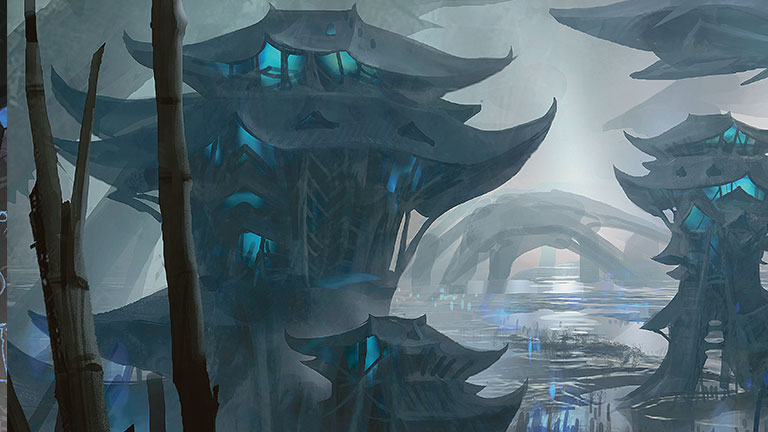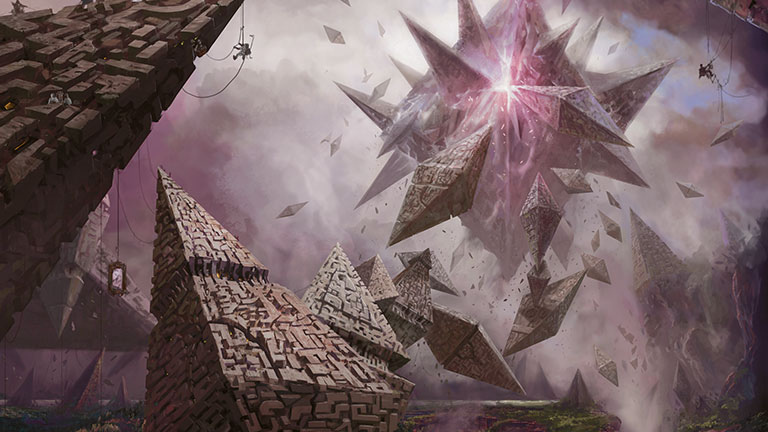For a viking setting, every spell is only verbal, whether spoken or sung.
There are examples of spellcasting without a component, psionically sotospeak. But the examples include spellcasting unintentionally, without realizing one is spellcasting, with an unintended spell effect. The accidental spells have a context, because the person was in fact thinking of that effect, even if only in passing. A spell never "backfires" or becomes "chaotic", but a spell can go off unconsciously. Some witches dont realize they are witches.
A student who is learning how to do magic, needs to learn how NOT to cast spells, as much as learn how to cast spells well.
Verbalizing a magical intention into words, is a central method to mentally focus an intended result. In D&D terms, it is more like vikings never use any spell component − neither v, s, nor m − when casting a spell. However, they do use a verbal as a "spellcasting focus". The mechanics work suitably. Only add the spellcasting ability bonus if the spellcaster is using a "verbal focus".
I am unsure how to handle the accidental spells. It wouldnt use up a spell slot: the mage might even not realize it happened. So it is more like a spontaneous "ritual". For the sake of D&D, maybe it is ok to treat it like the old school Wish spell. The player might express something in passing, and the DM can reinterpret the words out of context, whether to be whimsical, humorous, generous, or to punish the player.
In any case, the verbal focus resembles a bard. The viking bard never uses a musical instrument, but will say (feminine magic) or sing (masculine magic) the spell.
Nine classes feel at home in a viking setting.
The Players Handbook has 12 classes. To set the tone of a viking setting, 9 of them are great or ok enough. The three that feel anti-viking are Wizard, Cleric, and Monk. More on these three later.
Of the nine:
Barbarian is fine. If a subclass can shapeshift fully and partially into an animal, it would be closer to a mythologically accurate berserk. The Barbarian as-is seems ok for a historically accurate one. The berserk is more like a member of a "cult", who did stuff out in the wilderness with other berserks. Essentially, they are repurposing feminine shamanic techniques, for a masculine use in war. They magically become animals to become fierce warriors. Their savagery made them antisocial and crazy, and distrusted by normal vikings.
Bard is all kinds of flavors of awesome. Use divination, charm, animal, and teleportation spells for a feminine shaman (whether woman or man), and use the morale building, combat buffing, healing, and melee magic for a masculine warrior (whether man or woman). The bard class is quintessentially viking.
Druid, in the sense of elemental magic, is not really a viking thing per se. But personifying the elements and manipulating the elements is a giant thing. And humans and giants can intermingle. So a human who learns how to wield elemental magic is possible. For example, weather manipulation is elemental, and there exist a few humans that can do this. Likewise the giants can take beast forms, but this is something that viking humans regularly do. Note: most viking "giants" are Medium human size. Of course, some are as big as a mountain, but might have a sibling who is as big as a human. The giants are nature spirits, and size depends on which natural feature the giant is. The dwarves might also be Druid, as they too take on animal forms, etcetera, and are elemental. Note: Viking dwarves petrify in sunlight, so theres that. Treat direct sunlight as radiant damage, as if a vampire.
Fighter. Of course.
Paladin. If you look at the list of the kinds of magic that viking men do, it has a paladin vibe: healing, enhanced armor class, resurrection, warding away hostile spirits, and so on. Maybe reflavor the "radiant" damage type to something less flashy, but everything else is on point. (Even radiant can work, if you are going for an unusual magical vibe, like elf shine or something.) The "oath" is basically an oath to be courageous, and to defend ones family, extended family, and friends.
Ranger. Like a Druid but gishier. A wilderness hunter-fisher who has contact with giants.
Rogue. Awesome. Especially because vikings are agile unarmored warriors, many "warriors" might be Rogues. Swap the light armor proficiency for a shield proficiency instead. Treat the "longsword" in the sense of a normal vikingsword, as a finesse weapon (like a rapier that slashes instead of pierces). Attacking face-to-face with advantage is excellent. Trickiness is a plus. Cowardly "backstabbing" is dishonorable, so flavor the advantage honorably. The Thief archetype has appropriate mechanics. Elsewhere the Swashbuckler is the best option for an actual "viking", the warrior that sails. Scout works for a wilderness hunter-fisher.
Sorcerer. Sorcerers are innately magical. So are viking mages. The Sorcerer character concept should work, but the actual bloodlines available are awkward. A Draconic Bloodline might work for a rare giant or dwarf who prefers the form of a monstrous snake. If so, the icy cold venom is an appropriate theme, as well as poison and fire. Viking dragons usually have arms only, and slither, and lack legs and wings. There are a couple that have wings too, tho. Wild Magic seems off, as randomly explosive magic isnt really a viking thing. Elsewhere, Shadow Magic might work for a viking dwarf. The gloominess is perfect. Yet the viking dwarf seems antisocial and low Charisma. Perhaps there is an exceptionally charismatic individual dwarf. The dire wolf is possible as an other nature spirit who hangs out with the dwarf. The Divine Soul Sorcerer might work for an elf. There is no celestial plane, and there are no angels. But viking elves personify sunrays up in the sky, and can heal, are fatefully lucky, and are always spellcasters. So they kinda resemble angels. They lack "spectral wings", of course, but can shapeshift into a swan, or other bird, to fly. When home up in the sky, they hover as sunbeams and cloud gleams do. Storm Sorcery can work for some of the few shamans who can manipulate weather. Certain giants and aesir are storm nature spirits. In sum, a sorcerer in a viking setting is ok. Rare but possible.
Warlock. The warlock can feel like a viking shaman. There is no "patron", but the shaman might have a friend who is a nature spirit, even one who was the teacher who taught the shaman how to do magic. If the teacher isnt human, it is probably a giant, or possibly a dwarf, vanir, elf, or aesir nature spirit. The Archfey Expanded Spells work well. But with reflavoring, the Great Old One Expanded Spells can work too − maybe the "otherness" and craziness suggest Ginnungagap and Odin themes. Telekinesis isnt really a viking thing, maybe reflavor how the force happens. Hexblade can work, maybe with an ancestral sword recovered from a grave, and ghostly stuff happening. Chain Pact probably has a friendly nature spirit in a beast form, but it can do magic and can be monstrous. Blade Pact is a plausible pact. If only there was a Staff Pact! Maybe a staff extends the range of a spell.
So, these are Nine. The nine classes that can accommodate viking flavor. In order of frequency, I would estimate the following.
Fighter, Rogue, Bard, Barbarian, Paladin, Warlock, Druid, Ranger, and Sorcerer.
The three classes that dont fit − Wizard, Cleric, and Monk − have much to offer but come with so much baggage, it seems impossible to include them without causing confusion and cultural misrepresention. The Wizard is too bookish, and fixates on preexisting "magical words" recipes. Viking spells are on the fly. The Cleric is polytheistic, not animistic, an organized religion is foreign, and healbot is wrong. The Monk is too Kung Fu. That said, after the viking setting is well understood, and there is a feel for it, it might be possible to tweak and reflavor these three classes. The Wizard in the sense of mind-affecting spells and elemental spells can work, especially if without a spellbook, and without spell components, except for a "verbal focus". Dwarves seem high Intelligence, suit a viking-ized wizard, and they make magic items. The Cleric as a warmage, something like a fullcaster Paladin, can work. If the Monk can somehow be a "wrestler", that is viking.
) - the term was enough to trigger a blood duel


